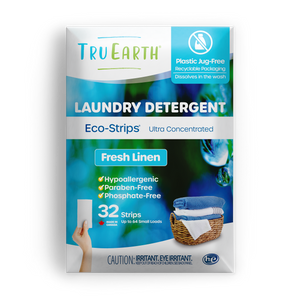Wood is a timeless and versatile material, but when mold takes hold, it can be a cause for concern. In this article, we'll explore the ins and outs of cleaning mold off wood surfaces. From understanding the root causes to implementing effective cleaning techniques, let's restore your wood to its natural beauty.

Learning Why Mold Thrives on Wood Surfaces
Understanding why mold thrives on wood surfaces is essential for effective mold prevention and removal. Wood's porous nature provides an ideal breeding ground for mold due to the presence of microscopic openings, creating a cozy environment for mold colonization.
One of the key factors is wood's ability to absorb and retain moisture, especially in damp areas with increasing humidity, making it a prime target for mold growth. Mold relies on the organic components found in wood, such as cellulose and lignin, as a nutrient source, potentially leading to structural damage and posing health risks.
Individuals can take proactive steps in identifying and addressing the conditions that foster mold growth by focusing on the reasons why mold thrives on wood.
Assessing the Mold Invasion
It's essential to first identify not just whether you're dealing with hardwood or softwood but also the specific species, if possible. This knowledge can significantly influence your approach to cleaning.
- Hardwoods, such as oak, maple, and cherry, are known for their durability and resistance to damage. These woods are often featured in flooring and furniture due to their longevity. However, despite their robust nature, they still require careful handling during cleaning to maintain their finish and prevent any undue wear.
- Softwoods, like pine or cedar, while beautiful in appearance thanks to their lighter tones and distinctive grain patterns, tend toward more vulnerability when it comes to scratches or dents. Cleaning these surfaces demands a gentle touch—a too-abrasive method could cause irreversible harm.
In addition to understanding the basic categorization into hardwoods or softwoods:
- Examine Any Finishes: The presence of varnish, lacquer or oil finishes will dictate what kind of cleaners should be used—some might necessitate specialized products.
- Consider Coatings: Beyond traditional finishes; modern treatments that offer additional protection against stains may also affect how you clean the surface without damaging these protective layers.
- Assess Age & Condition: Older wood pieces might have historical value that requires expert advice before attempting any restoration work yourself including deep-cleaning processes which could strip away patina built over years.
- Assessing Vulnerability: Knowing whether your wooden item has been previously exposed environmental factors like excessive moisture (leading potential mildew growth) can guide towards choosing correct preventive measures during routine cleansings thus preserving piece’s integrity longer period time
Selecting Effective Cleaning Agents
Not all cleaning agents suit mold removal on wood. Choose wisely to ensure effective cleaning without causing harm.
Gentle Soap and Water Blend
For small, surface-level mold, a mixture of mild soap and water proves effective. This gentle solution cleans without compromising the wood's integrity.
Vinegar Magic
A blend of vinegar and water offers a natural and potent option. Vinegar's acidity helps eradicate mold, but proper ventilation is essential due to its strong odor.
Crafting Wood-Specific Cleaning Techniques
Different wood surfaces may require tailored cleaning techniques. Adjust your approach based on the wood type for optimal results.
Tender Treatment for Hardwood
Hardwood demands a delicate touch. Utilize a soft-bristle brush or cloth to prevent scratching. Work in the direction of the wood grain for effective yet gentle cleaning.
Navigating Softwood Cleaning
Softwood, being more porous, may absorb cleaning solutions differently. Avoid oversaturation, using a gentle touch to prevent damage while ensuring thorough cleaning.
Ensuring Safety During Cleaning
When cleaning mold off wood, prioritizing safety for yourself and your environment is paramount.
Safety Gear Necessities
Equip yourself with safety gear, including gloves and a mask, to shield against mold spores and cleaning agents. Safety takes precedence throughout the cleaning process.
Optimal Ventilation
Ensure proper ventilation during cleaning. Open windows and doors to facilitate fresh air circulation, minimizing exposure to cleaning fumes and expediting the drying process.
Preventing Future Mold Growth
Cleaning is a step, but preventive measures are necessary to avoid future mold issues.
Moisture Management
Address the root cause by managing moisture levels. Identify and fix leaks, enhance ventilation, and employ dehumidifiers in damp areas to create an unwelcome environment for mold.
Regular Vigilance
Conduct routine inspections of wood surfaces, particularly in moisture-prone zones. Early detection enables swift action before mold spreads.
Knowing When to Seek Expert Help
In certain instances, mold infestations may be extensive or challenging to manage. Recognizing when professional assistance is needed is critical.
Extensive Mold Presence
If the mold infestation persists or recurs despite efforts, consulting a professional mold remediation service is wise. Their expertise and tools are essential for severe cases.
Uncovering Hidden Mold
Mold may lurk in concealed spaces, such as within walls. Suspecting hidden mold warrants professional inspections and targeted interventions.
Post-Cleaning Inspection
After cleaning, conduct a thorough inspection to ensure no mold remains and the wood is in good condition.
Visual Assurance
Examine the cleaned wood visually. Look for any lingering mold spots, discoloration, or signs of damage. Promptly address any issues that persist.
Sensory Confirmation
Run your hands over the cleaned wood and check for any unusual smells. A musty odor may indicate lingering mold or insufficient drying.

Embracing the Resurgence of Mold-Free Wood
The process of cleaning mold off wood involves understanding, meticulous assessment, and the application of appropriate techniques.
By following the strategies outlined in this article, you can revive your wood surfaces to their natural splendor while ensuring a healthy and mold-free environment. Celebrate your accomplishments and relish the beauty of your mold-free wood sanctuary!


